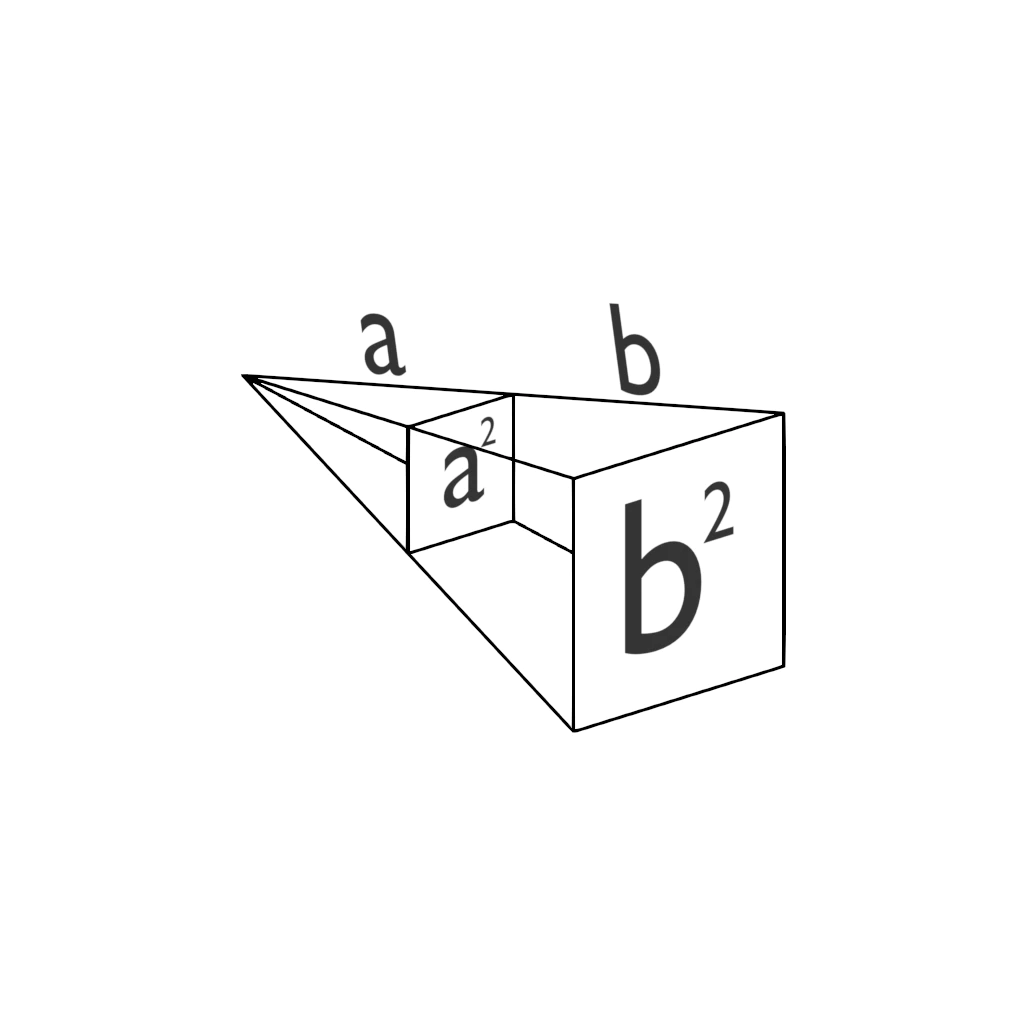库仑定律与静电场
库仑定律与静电场
和电流相对的就是静电,单独的电荷。我们一般在冬天被电到也是因为静电电荷形成的电势差导致的。
静电荷
在自然界中,一个电荷可以是一个电子或者一个质子。
质子
质子 (Proton) 是一种自然界中的电荷,携带正电荷。它的电荷量为 库伦。质子存在于原子核中,能够形成静电荷。当质子失去电子时,它形成一个正的静电荷。
电子
电子 (Electron) 是一种自然界中的电荷,携带负电荷。它的电荷量为 库伦。电子围绕原子核运动,能够形成静电荷。当电子被孤立时,它会产生负的静电荷。
中子
中子 (Neutron) 并不是一种电荷。它不携带电荷,然而在原子核中,中子的存在对于稳定核结构至关重要,因为它能有效防止质子之间的电荷排斥力,从而保持原子核的稳定。
就像在物理课中说过的一样,同种电荷相互排斥,但为什么呢?
库仑定律
我们都知道重力场呈平方反比律:
平方反比律
平方反比律 (Inverse Square Law) 是一种物理定律,表明某些物理量(如光强、引力、静电力等)与距离的平方成反比。这意味着随着距离的增大,这些物理量的强度会迅速减弱。平方反比律的来源可以追溯到点源的辐射或力的分布。在三维空间中,随着距离的增加,能量或力的“分布面积”以平方比例增加,因此强度会减弱为距离的平方反比。如下图中,场的强被均匀的散在了与的球面上,因此场强之比为, 顾

由于电场也是由一个点发散的,所以它也符合平方反比律。我们假设距的距离为:
由于电场也与电荷量呈正比:
因此我们知道电场一定是以下形式,其中是一个常数:
这只是一个电荷的电场,未免有点无聊。如果我们想要得到两个电荷和之间的互作用,那就需要探讨电场对于电荷的力怎么计算了。
接下来,我们可以通量纲分析,发现电场的量纲是力除以电荷,单位是. 也就是说,要得到电场力,我们就要用电场乘以电荷的电荷量:
其中, 一般写作. 它有个特殊的名字,库仑常数。一般来说,, 这个值是托马斯·杨等实验测定的。
多个电荷的情况
这是一个有趣的仿真练习;好奇的可以去看看这里。重力场由于也是可以线性叠加的平方反比场,所以仿真和静电场是一样的,所以我就拿来那里的代码直接用了。
代码
答题思路是OOP,创建了一个class Charge来储存单个电荷的信息,还有一个class ElectricField来储存总电场。具体算法是通过遍历场景的Charge物体,然后一个一个进行叠加来计算总电场。
import bpy
from typing import Tuple, List
from math import sqrt
s = 4
# Helper Funcs
def assign_emission_shader(name, color, obj, strength=1.0):
"""
Assign an emission shader with the specified color and strength to the given object.
Parameters:
- name: The name of the material to be created.
- color: The RGB color for the emission shader (a tuple like (1.0, 0.0, 0.0) for red).
- obj: The Blender object to which the material will be assigned.
- strength: The strength of the emission (default is 1.0).
"""
# Check if the object already has the material assigned
existing_material = bpy.data.materials.get(name)
# If the material doesn't exist, create a new one
if not existing_material:
material = bpy.data.materials.new(name) # Create the material
material.use_nodes = True # Enable the use of nodes
nodes = material.node_tree.nodes
# Clear existing nodes
for node in nodes:
nodes.remove(node)
# Add an Emission shader node
emission_node = nodes.new(type='ShaderNodeEmission')
emission_node.inputs['Color'].default_value = (*color, 1.0) # Set the color with alpha = 1
emission_node.inputs['Strength'].default_value = strength # Set the emission strength
# Add a Material Output node
material_output_node = nodes.new(type='ShaderNodeOutputMaterial')
# Connect the emission node to the material output
material.node_tree.links.new(emission_node.outputs['Emission'], material_output_node.inputs['Surface'])
else:
material = existing_material
# Update the existing material's color and strength
nodes = material.node_tree.nodes
for node in nodes:
if isinstance(node, bpy.types.ShaderNodeEmission):
node.inputs['Color'].default_value = (*color, 1.0)
node.inputs['Strength'].default_value = strength
break
# Assign the material to the object
if obj.data.materials:
# If the object already has materials, replace the first one
obj.data.materials[0] = material
else:
# If the object has no materials, append the new one
obj.data.materials.append(material)
def lerp(a, b, k):
return a + (b - a) * k
def color_lerp(color1, color2, k):
r, g, b = lerp(color1[0], color2[0], k), lerp(color1[1], color2[1], k), lerp(color1[2], color2[2], k)
return (r, g, b)
class Charge:
def __init__(self, k: float, pos: Tuple[float, float, float]):
"""
initialization method
"""
self.k = k
self.x = pos[0]
self.y = pos[1]
self.z = pos[2]
def __call__(self, pos: Tuple[float, float, float]):
posx = pos[0]
posy = pos[1]
posz = pos[2]
r = sqrt((self.x - posx)**2 + (self.y - posy)**2 + (self.z - posz)**2)
fieldx = -(self.k * (posx - self.x)) / (r**3)
fieldy = -(self.k * (posx - self.y)) / (r**3)
fieldz = -(self.k * (posx - self.z)) / (r**3)
return (fieldx, fieldy, fieldz)
class ElectricField:
def __init__(self, charges: List[Charge]):
self.charges = charges
def __call__(self, pos):
x, y, z = 0, 0, 0
for charge in self.charges:
field = charge(pos)
x += field[0]
y += field[1]
z += field[2]
return (x, y, z)
for material in bpy.data.materials:
if material.name[-1] == "E":
bpy.data.materials.remove(material)
charges = []
for obj in bpy.context.scene.objects:
if obj.name[-1] == 'E':
charges.append(obj)
fields = []
for charge in charges:
fields.append(Charge(charge['q'], charge.location))
sum = ElectricField(fields)
for obj in charges:
k = obj['k']
c1 = (0.7, 0.3, 0.1) # Change to your preference
c2 = (0.1, 0.3, 0.7) # Change to your preference
color = color_lerp(c1, c2, k)
assign_emission_shader(obj.name, color, obj, s)